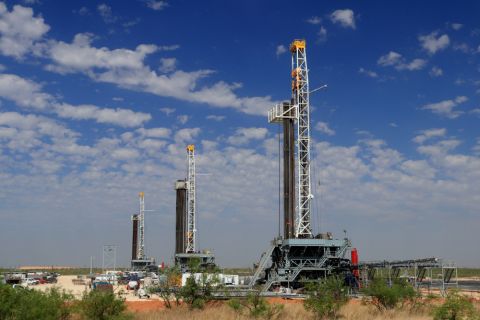After the price of crude oil, the most watched number in the industry is the Baker Hughes rig count. The crude price hit $50.21 on May 26 before settling at $49.18. That was the first time since October 2015 that the price topped $50.
Now the next step is to see if the price will level out around $50 and what impact that will have on the rig count.
What will it take to turn the rig count around and when is that likely to happen? At the 16th Annual Simmons/Piper Las Vegas Energy Conference in mid-winter, Concho Resources said the Permian Basin could add 50 rigs relatively quickly and easily.
“Beyond 50 rigs, lead times extend. In the event oil prices improve sufficiently, the call for increased activity in the Bakken and Eagle Ford would increase and lead to conditions tightening considerably in the event the oil price recovery is sharp and quick,” according to the energy conference industry note published March 7.
For the June 3 Baker Hughes rig count, the number of rigs working in the Permian Basin was up by five rigs. The overall U.S. rig count rose by four rigs to 408 units.
Oil prices hit bottom on Feb. 11 at $26.21/bbl. On June 6, the market closed at $49.74. If oil prices have started back up, perhaps the rig count will too.
RBC Capital Markets said June 3 that the rig count was flat for the first time since August 2015. “While we expect choppiness in the near term, we think the bottom has effectively been put in, and [we] expect to see week-over-week increases beginning in third-quarter 2016,” the company reported.
The 2017 West Texas Intermediate futures strips have remained above $50/bbl since May 16. This is the threshold commonly cited by E&P companies as the level they would like to see maintained for about 90 days before drilling activity increases, according to the Simmons/Piper report. Day rates are expected to stabilize with the rig count, and the average U.S. land rig count in 2016 would be 427 units.
There will be challenges for the industry in turning the rig count around, including increased labor costs, higher repair and maintenance costs, higher costs needed for more travel because of closed facilities, field-level headcount reductions in excess of about 50% and gaining access to consumables and replacement parts, the report continued.
The industry is exceedingly grim as it “endures the worst slump since the 1980s: 1) the industry is hip-deep in blood from headcount reductions, 2) cash flow has evaporated, 3) balance sheets are under extreme duress and 4) the industry cost of capital has risen exponentially,” the report said.
Looking historically, the rig count has nearly doubled within 18 months of the low point. If the rig count and prices hold, my prognosis is for the rig count to be at 800 to 900 rigs by year-end 2017. Keep calm and drill on.
Contact Scott Weeden at slweeden@hartenergy.com.
Recommended Reading
Diamondback Energy to Acquire Permian’s Endeavor for $26B
2024-02-11 - Diamondback Energy will acquire Endeavor Energy in a cash-and-stock agreement that will create a Permian juggernaut with a combined value of more than $52 billion in a merger of near equals.
ARM Energy Sells Minority Stake in Natgas Marketer to Tokyo Gas
2024-02-06 - Tokyo Gas America Ltd. purchased a stake in the new firm, ARM Energy Trading LLC, one of the largest private physical gas marketers in North America.
UK’s Union Jack Oil to Expand into the Permian
2024-01-29 - In addition to its three mineral royalty acquisitions in the Permian, Union Jack Oil is also looking to expand into Oklahoma via joint ventures with Reach Oil & Gas Inc.
Excelerate Energy, Qatar Sign 15-year LNG Agreement
2024-01-29 - Excelerate agreed to purchase up to 1 million tonnes per anumm of LNG in Bangladesh from QatarEnergy.
Ecopetrol, Occidental Permian JV Generating Positive Results
2024-03-07 - Ecopetrol SA's joint venture with Occidental Petroleum in the Permian continues to generate outstanding operational and financial results for the Colombian state-owned energy giant.





